Omnichannel retailing is a fully connected way of doing business, giving shoppers a consistent experience across all channels. It allows merchants to connect with customers wherever they prefer to shop.
Today’s customers shop using various methods, from traditional stores to online channels like websites, social media, and mobile apps. They expect a seamless experience, with 76% wanting consistent interactions across all departments. They also expect the omnichannel retail process to cover product delivery options, like buying online and picking up in-store, and other touchpoints in their shopping journey with a retailer.
If you want to know more about omnichannel retailing, keep learning to find out:
- Why shift from single-channel to omnichannel retailing?
- Multichannel vs omnichannel in retail
- Omnichannel retailing trends in 2023-2025
- 7 steps to create a successful omnichannel retailing plan
- Omnichannel retailing examples
Why Shifting from Single Channel to Omnichannel Retailing?
In fact, the limitations of the single-channel approach have become increasingly apparent. For example, relying on a single channel makes businesses vulnerable to disruptions. A physical store may face a natural disaster, and an online store may experience technical difficulties. All of those things can severely impact operations and revenue.
So, if you don’t want to fall behind in the race for sales growth, it’s time to start expanding your business to omnichannel eCommerce, which can help you:
# – Engage customers across channels
The customer journey is complex, with multiple online and offline touchpoints. A recent report shows that US, UK, Germany, and France shoppers interact with at least 11 touchpoints. As a result, with omnichannel retailing, you can establish a robust and unified presence across all these touchpoints where you will probably find your targeted customers.
# – Create personalized experiences
Customers love personalization, with 71% expect that from companies. They want brands to understand their needs and customize their shopping experiences. Omnichannel retail lets you personalize across all touchpoints using data like purchase history and browsing behavior, catering to each customer’s preferences.
# – Build customer loyalty
Omnichannel strategies are adaptable, allowing brands to stay relevant as new channels emerge. Using a flexible approach, brands can deepen relationships with existing customers and boost loyalty. Omnichannel customers tend to spend more, making it crucial for a customer retention strategy that increases lifetime value.
# – Increase sales
Expanding across multiple channels helps you reach more customers and drive sales. Customers who enjoy a consistent shopping experience across platforms are more likely to buy. For example, after shifting to omnichannel retail, Zara saw a 74% increase in sales in 2020.

Multichannel vs Omnichannel in Retail
Although some believe that omnichannel is just an extension of multichannel retailing, the two are actually very different and separate retail strategies.
Have a look at the table to understand the key different between multichannel vs omnichannel.
Aspects | Multichannel | Omnichannel |
Customer experience | • Independent experience across each channel. Customers may receive inconsistent service or messaging depending on the channel used. | • Seamless and unified experience across all channels. Customers receive consistent service and messaging no matter the platform or touchpoint. |
Interconnection between channels | • Limited or no integration between channels. Each channel operates in isolation (e.g., online store separate from physical store). | • Strong interconnection across all channels. Customers can switch between channels effortlessly (e.g., buy online, return in-store). |
Data integration | • Data is siloed across different channels, making it difficult to get a unified view of the customer. | • Centralized data integration enables a holistic view of customer behavior across channels. |
Customer journey map | • Fragmented customer journey. Each channel has its own journey, often disconnected from others. | • Unified customer journey. All touchpoints are linked, providing a continuous journey experience across channels. |
Strategy focus | • Maximizing individual channel performance (e.g., focusing on improving sales in each channel separately). | • Creating a cohesive, channel-agnostic strategy that focuses on providing a seamless, integrated customer experience across all touchpoints. |
Omnichannel Retailing Trends in 2023-2025
The past few years have witnessed a significant shift in consumer shopping behavior towards omnichannel retail, with 73% using multiple channels during their shopping journey (in 2017). This trend was amplified during the COVID-19 pandemic, as consumers increasingly sought seamless shopping experiences that integrated online and offline channels. According to an Oracle Grocery Retail survey, since the pandemic, 53% of residents in the U.S. have shopped online for groceries during the pandemic, with 37% stocking up more frequently online than in-store.
This shift highlights the matter of offering a consistent and engaging experience across all channels to reach and convert customers effectively. A report from Rain Sales Training also showed that customers should make at least 8 touchpoints on average before purchasing from a brand. Hence, don’t limit your brand’s presence to just one or two channels.
This trend does not stop there, as a report from Statista estimated that multichannel eCommerce can bring over $800 billion USD in revenue in the United States alone. This means sellers should optimize their strategies across all platforms to capture this massive market potential to stay competitive and drive significant growth.
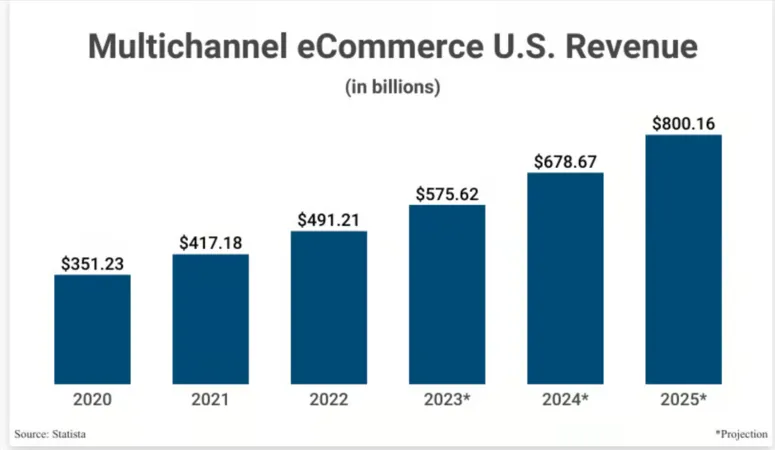
7 Steps to Create a Successful Omnichannel Retailing Plan
Follow these steps if you want to have an omnichannel retailing plan that works best for your business.
1. Segment your customer
You can divide your customer base in various ways, depending on what suits your business best. This process, known as market segmentation, helps identify specific groups within your target market so you can tailor your offerings to them.
Why is this important? Segmenting customers allows you to create a more focused strategy for different groups instead of a generic approach.
Some common ways merchants segment customers include:
- Income range
- Geographic location
- Generation (e.g., millennials, Gen X)
- Online behavior
- Values
- Interactions with marketing campaigns
Once you’ve identified your customer segments, you can better tailor your offerings to each group.
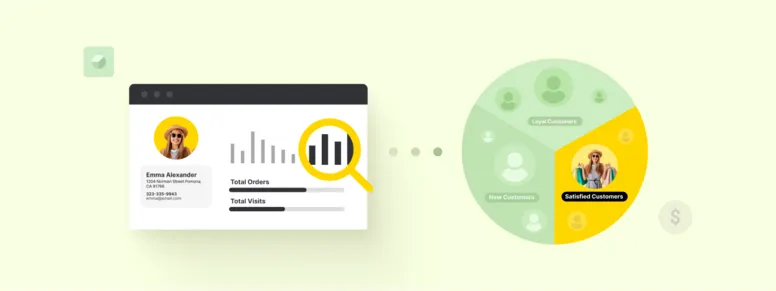
2. Analyze suitable channels for each segment
Different merchants adopt new channels based on their size and target market.
They often start with broad platforms like Amazon, Google, and Facebook. They focus on more specific channels as they grow, such as TikTok for Gen Z.
Let’s say you are a customer planning to buy a designer handbag. There are countless places you could look, depending on the type of bag you’re interested in.
- If you’re after a rare, vintage, or second-hand designer bag, you might check out eBay, Etsy, or specialty resale sites.
- For the latest fashion trends, you might browse Instagram for inspiration.
- If you want to invest in a luxury handbag, you might visit a high-end department store to see and feel the options in person.
This applies to any product and target market. To reach consumers effectively, you need to understand their behavior, where they browse and buy, and what motivates them.
Combining qualitative and quantitative data helps you decide which channels are most valuable. Talking to customers provides insights and builds empathy while tracking key performance indicators gives you a fuller picture.
And, don’t forget to use analytics to identify your most profitable and efficient channels and focus on delivering the best shopping experience across them.
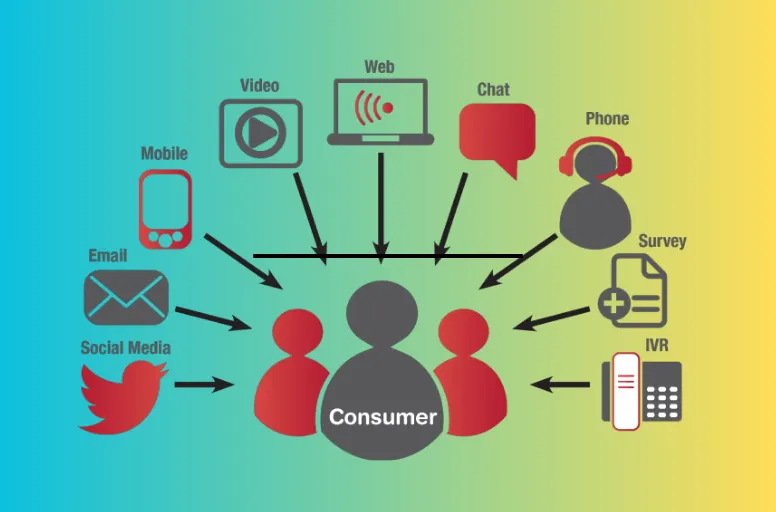
3. Develop a customer journey map
Understanding where your customers shop is important, but it’s only part of the picture. Businesses also need to know how and why customers make their decisions.
Mapping out the customer journey can reveal insights into their thought processes and highlight what’s working and what isn’t.
For example, imagine you’re shopping for a fashion-forward designer bag. Your journey might look like this:
- Start by searching for “designer bags” on Google.
- Explore a few brands’ Instagram profiles that catch your eye.
- See retargeting ads for various brands, and click on the ones that interest you.
- Sign up for email newsletters from a few brand websites.
- Look up reviews for your top choices.
- Finally, choose a bag and make the purchase on the brand’s website or at the store.
This journey could have taken many different paths, but the customer still expects a smooth experience. That’s one of the biggest challenges of omnichannel retailing, as customer journeys are often complex and non-linear, requiring a deep understanding of what customers truly want.
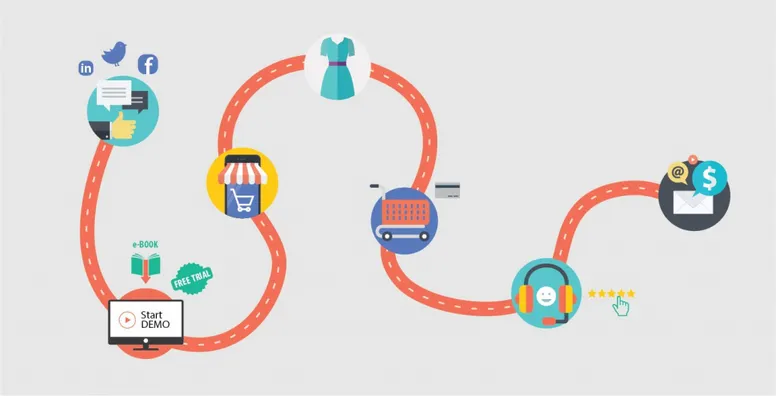
4. Ensure the best customer support across channels
Today, consumers want the convenience of buying wherever and however they choose—and expect the same ease with customer support. If you’re active on multiple channels, you need to ensure your support is equally accessible.
→ Imagine this scenario:
A customer sees a product through a Facebook ad and clicks the link to the vendor’s website, but the link doesn’t work. They want that item but don’t know where to turn—Facebook or the vendor?
If support teams aren’t connected, the customer might get frustrated and give up on the purchase, leaving everyone unhappy.
By building a cross-channel customer support system, you can avoid these problems and assist customers no matter where they are in their journey. Consistent, reliable support can boost customer loyalty and increase their lifetime value.

5. Integrate your system into an automated workflow
Integrating your tech stack is crucial, especially for managing inventory. As you expand to multiple sales channels, having a real-time, unified view of your inventory is essential. You’ll also want a centralized source for product information, so you don’t need to update each channel individually.
A tool for multichannel integration like LitCommerce can help sync accounts across platforms like Amazon, eBay, Google, and Walmart. This integration streamlines your data management, improves marketing efforts, and enhances customer support by allowing seamless channel transitions.
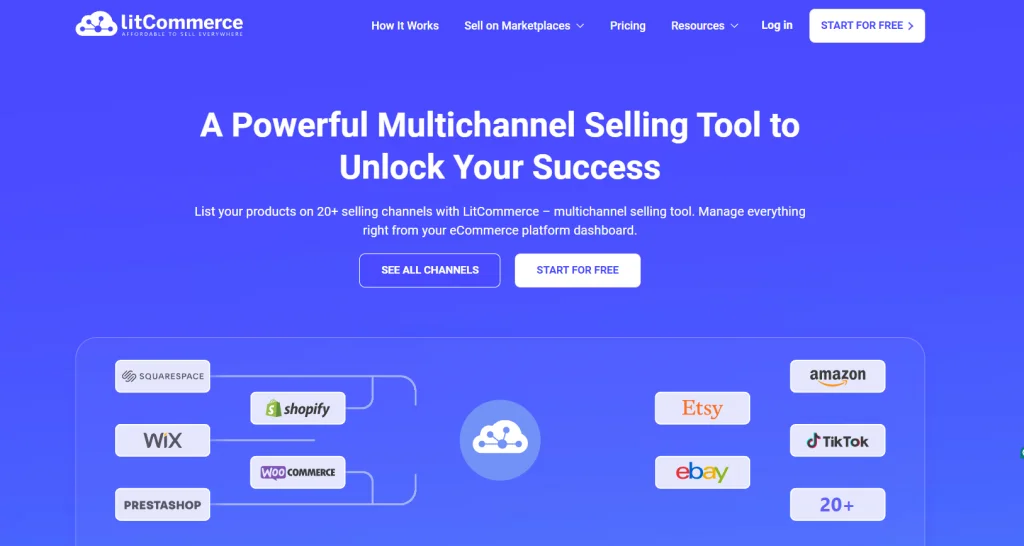
6. Add automation
Tasks that don’t require much critical thinking aren’t worth high costs—that’s where automation helps.
But automation does much more. Here’s how it can give you better control over your business:
- Deploy chatbots to handle routine customer inquiries, allowing your reps to spend more time on complex issues.
- Choose a tech stack that integrates smoothly, giving you a real-time overview of your business and enabling data-driven decisions.
- Use behavioral triggers to send personalized marketing messages at the right points in the customer journey.
- Implement abandoned cart programs to remind customers to complete their purchases, no matter where they started.
- Automate follow-up messages to thank customers and offer discounts for future purchases.
7. Test & update regularly
Testing isn’t just something you do right before launch; it should be an ongoing process, especially in omnichannel retail.
This means continuously testing every part of your site—from desktop browsing to how your site handles customer interactions. Test everything, from subject lines and content to offers and segmentation. Keep refining for better targeting.
Over time, automate your testing to get real-time insights into how your business is performing and where you can improve. Collecting data at every touchpoint is critical, so ensure you have the right tools and partners to gather and analyze this information efficiently.
Omnichannel Retailing Examples
Talking about the concept of omnichannel customer experience is one thing, but seeing it in action is another. Here are some companies that do it exceptionally well and stand out:
1. Starbucks
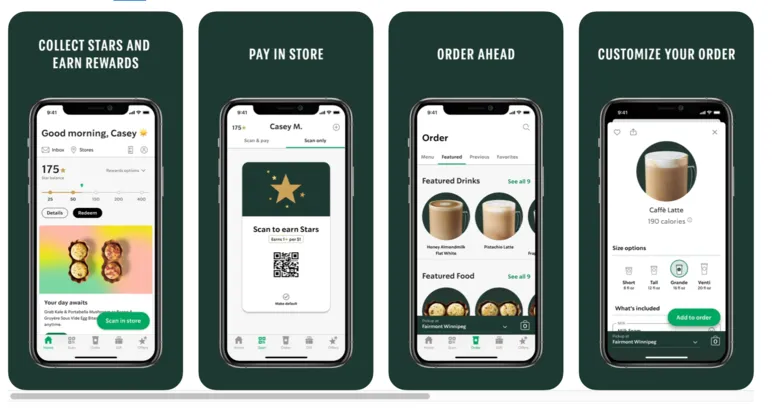
The Starbucks rewards app is often seen as one of the best examples of an omnichannel experience. You receive a free rewards card to use with every purchase. However, what sets it apart from traditional loyalty programs is the ability to check and reload your card through your phone, the website, in-store, or on the app. Any updates happen instantly, so if you’re in line and short on balance, you can reload and use it immediately.
2. Chipotle
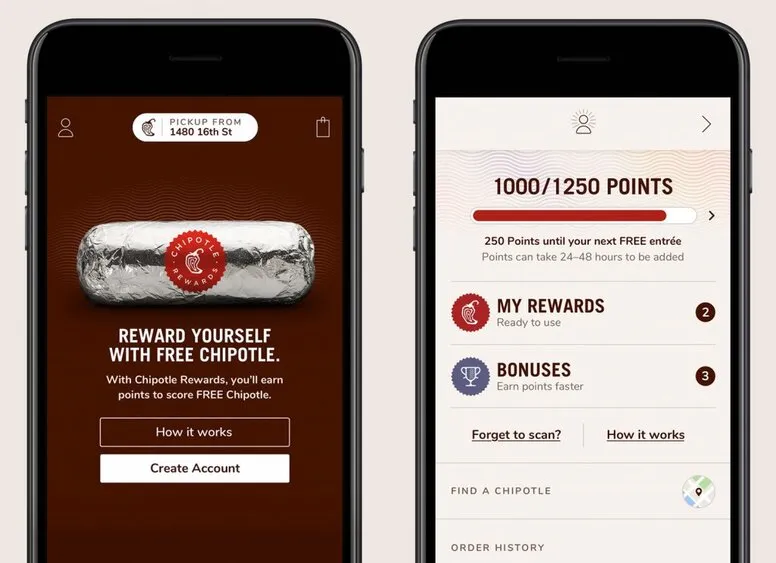
Have you ever placed an online order only to arrive and find it wasn’t ready? It’s frustrating. Chipotle aims to eliminate this issue with its online website and mobile app, allowing you to order from anywhere and have it prepared by the time you arrive. By signing up for an account, you can also save your favorite orders, making the process even faster and smoother for future visits.
3. Pepperfry

Pepperfry, a home furnishings company, combines its online store with an engaging in-person experience. Customers can browse furniture online and then visit a “Studio Pepperfry” to see items in person. At the studio, they can explore with a design consultant and make a purchase only if they’re certain, helping to avoid buyer’s remorse. If they still need time, they can return home and complete their purchase online, reducing the pressure to buy in-store.
The investment appears to be paying off, with the company reporting that 10-15% of its sales are generated from these studio locations.
Omnichannel in Retail – FAQs
Omnichannel in retail is a strategy that provides a seamless shopping experience across multiple channels, like brick-and-mortar stores, online websites, and mobile apps. It ensures a consistent brand experience for customers, regardless of the channel they use. A famous example of an omnichannel store is Sephora. Customers can browse products online, order in-store pickup, or return items to any physical store. Sephora also offers features like virtual try-ons and personalized recommendations across all channels. One of the biggest challenges for retailers is integrating various systems and channels to create a cohesive experience. This requires significant investment in technology and coordination across different departments within the organization. Omnichannel retail has significantly impacted the industry by increasing customer satisfaction, loyalty, and sales. It allows retailers to understand customer preferences better and provide personalized experiences, leading to increased revenue and market share.
Why Not Bring Your Business Towards Omnichannel Retailing Trends
A smooth shopping experience across multiple channels is the key to success. Retailers should adapt their business models to meet customers where they are and boost profitability. As single-channel strategies become outdated, omnichannel retailing emerges as the solution.
With a tool like LitCommerce, you can engage customers across all channels while opening up new growth opportunities and securing your business’s future. If you need help to install the tool, contact us now. Plus, you can find more helpful guides about omnichannel in our Blog, so don’t forget to have a look.



